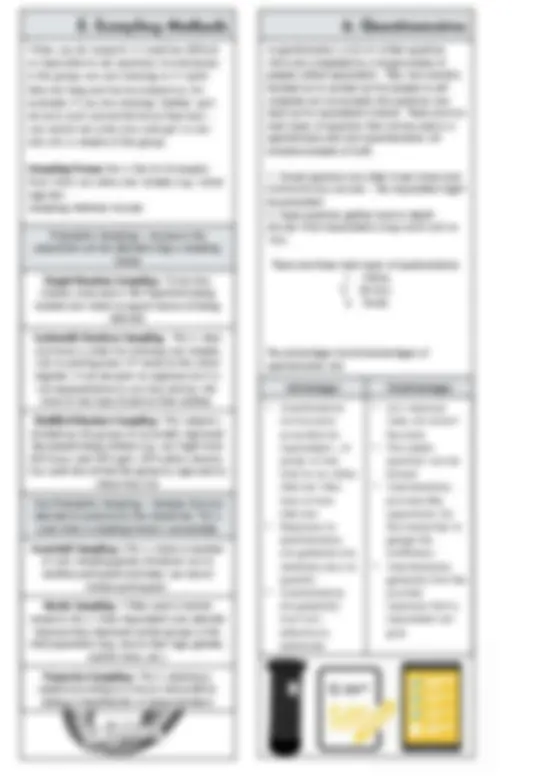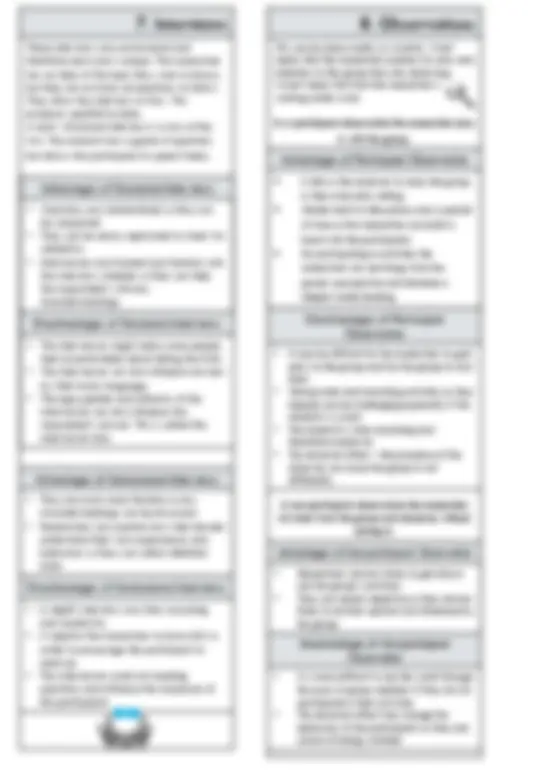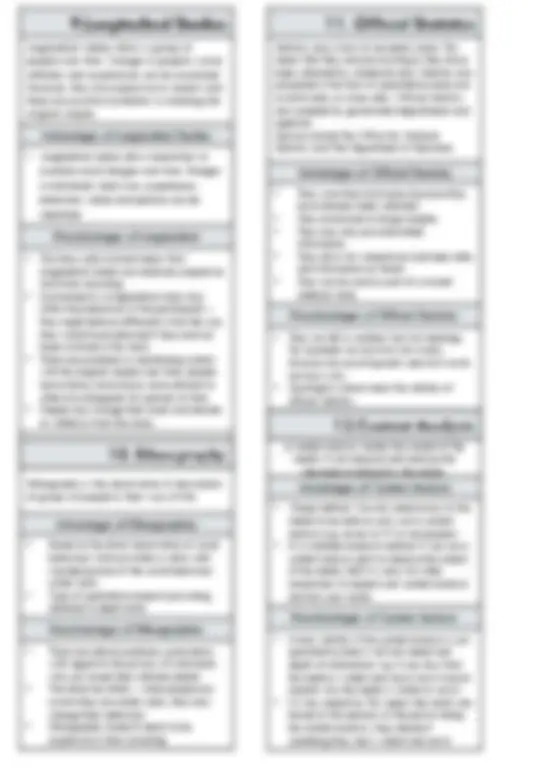





Study with the several resources on Docsity

Earn points by helping other students or get them with a premium plan


Prepare for your exams
Study with the several resources on Docsity

Earn points to download
Earn points by helping other students or get them with a premium plan
Community
Ask the community for help and clear up your study doubts
Discover the best universities in your country according to Docsity users
Free resources
Download our free guides on studying techniques, anxiety management strategies, and thesis advice from Docsity tutors
An overview of sociological research methods, including the importance of reviewing existing literature, carrying out research, and evaluating its reliability and validity. It covers various research methods such as quantitative and qualitative data collection, positivism and interpretivism, and sampling techniques. Additionally, it discusses ethical considerations and theoretical issues in sociological research.
Typology: Exercises
1 / 6

This page cannot be seen from the preview
Don't miss anything!




The research process in sociology involved several steps or stages. In broad terms, these are: Aim - An aim is something that the researcher wants to investigate or find out. It can be a general or specific idea, but this is the purpose of the research. Hypothesis - This is an idea which a researcher guesses might be true, but has not yet been tested against the evidence. Review Existing Literature - Before you carry out research you need to look at what has been researched in the area before. Plan a Research Method - Once you have established what you are trying to find out, you choose which research method you will use. Sampling - A sample is made up of your research participant (people you are studying). It is a smaller representative group drawn from the population you want to study. Pilot Study- This is a small-scale practice of your research This is carried out before the main body of research to check for initial patterns, issues with questions, practical problems etc. Carry out Research - Here you need to look at your initial research plan and adjust it based on the findings of your pilot study. Then you carry out your research on your sample. Gather Results - Depending on the research method chosen, the way you gather your results will vary. Analysis - This is the part where you try to make sociological statements from your findings. Here you link what you have found with ideas in society. Evaluation - Before you publish your work it is important you evaluate what you have done. You consider the strengths of your research and the method you use. However, you also consider the weaknesses. Publish - The researcher now decides how to publish the results. This can be in many forms: book, magazine, T.V show etc
NOTE – Methods is embedded throughout
- Use this to supplement your revision, not replace it.
Another influence on a researcher’s choice of method is the type of data they want to gather. Data is the information collected by sociologists when they research society and it can be divided into the following types: Primary data : This is information that researchers have gathered themselves. E.g. questionnaires, interviews, observations. Secondary data: This is information that has been collected by somebody else & then used by the researcher. E.g. official statistics, historical documents & diaries.
When a researcher collects data it can also be divided into quantitative data and qualitative data. Quantitative data is numerical, often presented as numbers shown in statistics, in graphs, bar charts, etc. Qualitative data is in-depth material, usually descriptive and presented in a written form.
Positivism is based on the idea that the only way to obtain knowledge about the world is through scientific methods. Positivist sociologists focus on behaviour that can be observed and measured rather than on people’s feelings or emotions. They prefer quantitative research methods such as large- scale surveys & prefer to describe society in statistical terms. Interpretivist - sociologists argue that the subject matter of sociology – people – is completely different from that of the natural sciences. People do not behave like objects or animals. Interpretivist sociologists prefer qualitative methods such as in-depth interviews and participant observation that collect rich, detailed accounts rather than statistics.
Whenever Sociologists conduct or look at research they evaluate it. They want to look at the advantages and disadvantages of the research and data. Sociologists do this by assessing the:
These interviews are unstructured and therefore each one is unique. The researcher has an idea of the topic they want to discuss but they do not have set questions to follow. They allow the interview to flow. This produces qualitative data. A semi- structured interview is a mix of the two. The research has a guide of questions
This can be done overtly or covertly. Overt means that the researcher explains his aims and intentions to the group they are observing. Covert means that that the researcher is working under cover. In a participant observation the researcher joins
In non-participant observation the researcher sits back from the group and observes without joining in.
It allows the observer to study the group in their everyday setting. Studies tend to take place over a period of time so the researcher can build a bond with the participants. By participating in activities the researcher can see things from the group’s perspective and develop a deeper understanding.
Longitudinal studies follow a group of people over time. Changes in people’s social attitudes and experiences can be examined. However, they are expensive to conduct and there are practical problems in retaining the original sample. Ethnography is the observation & description of group of people & their way of life
Statistics are a form of secondary data. This means that they are pre-existing as they have been collected by somebody else. Statistics are presented in the form of quantitative data such as birth rates or crime rates. Official statistics are compiled by government departments and agencies. Sources include The Office for National Statistics and The Department of Education. A content analysis studies the content of the media. It can measure and analyse the messages produced by the media.